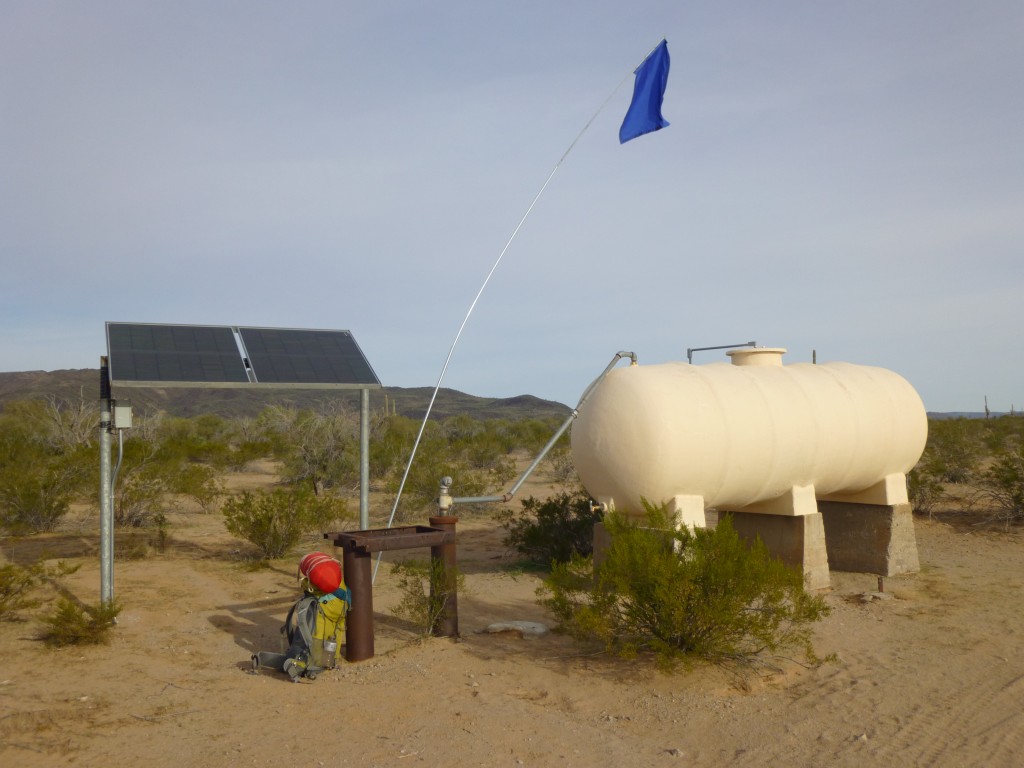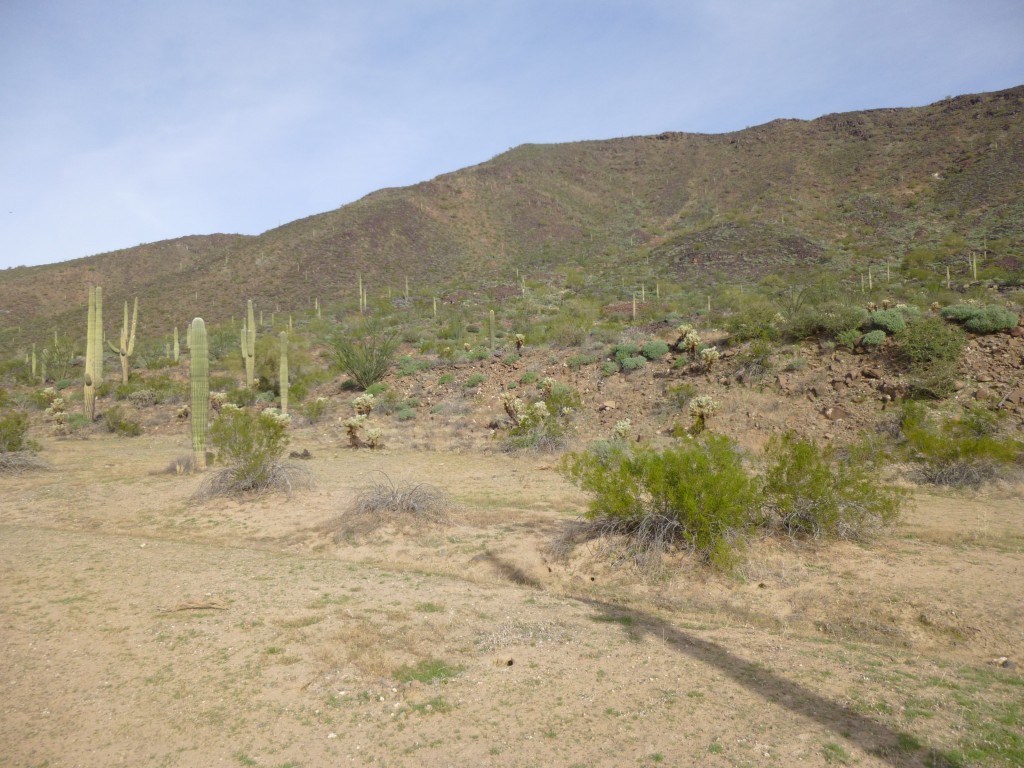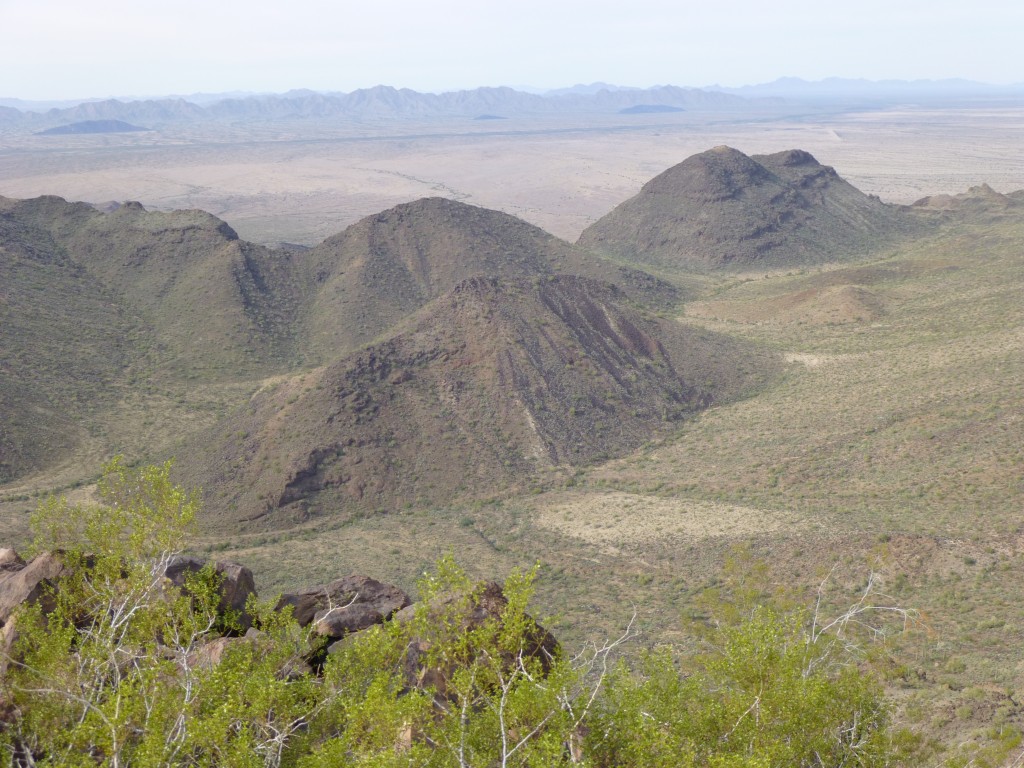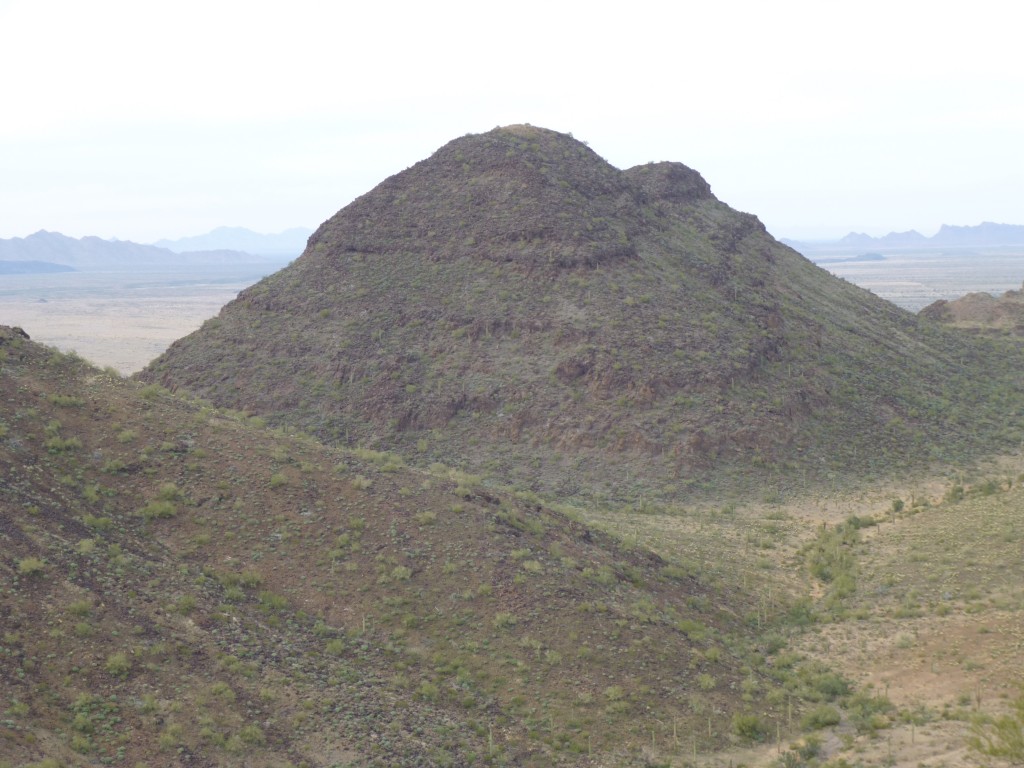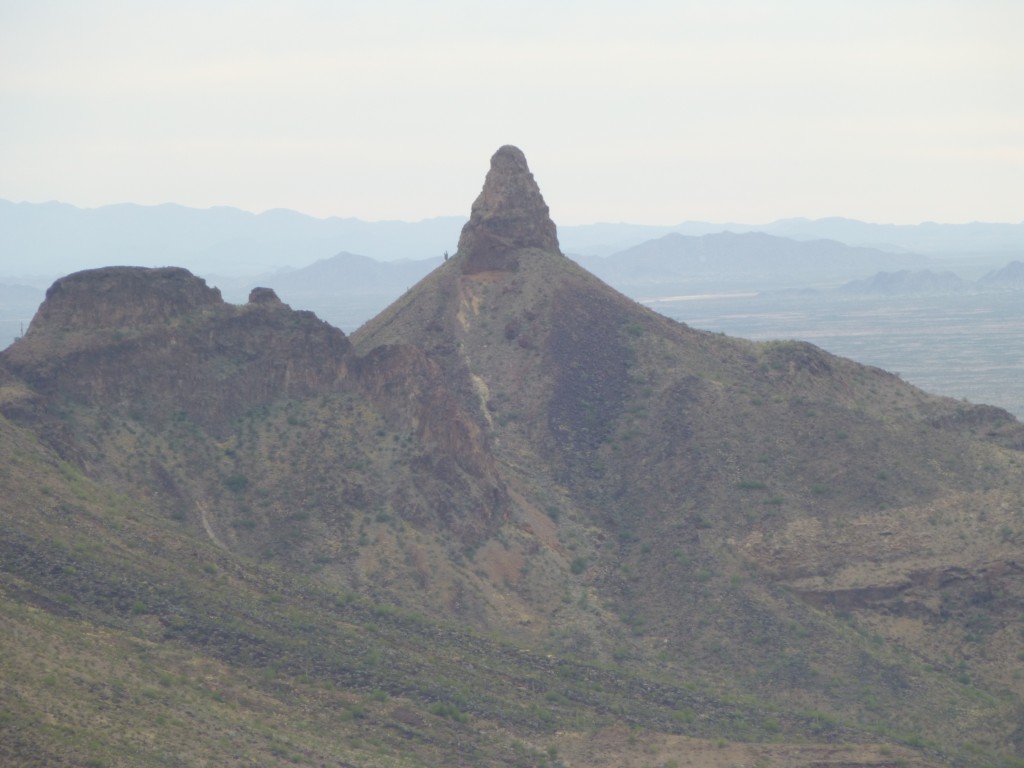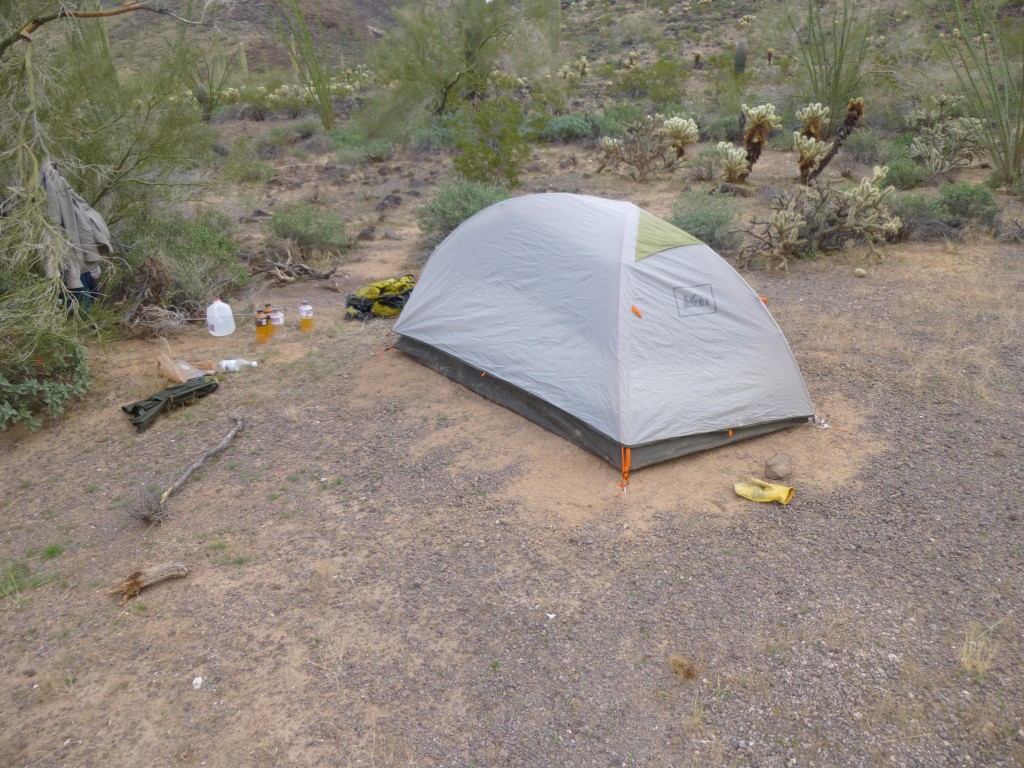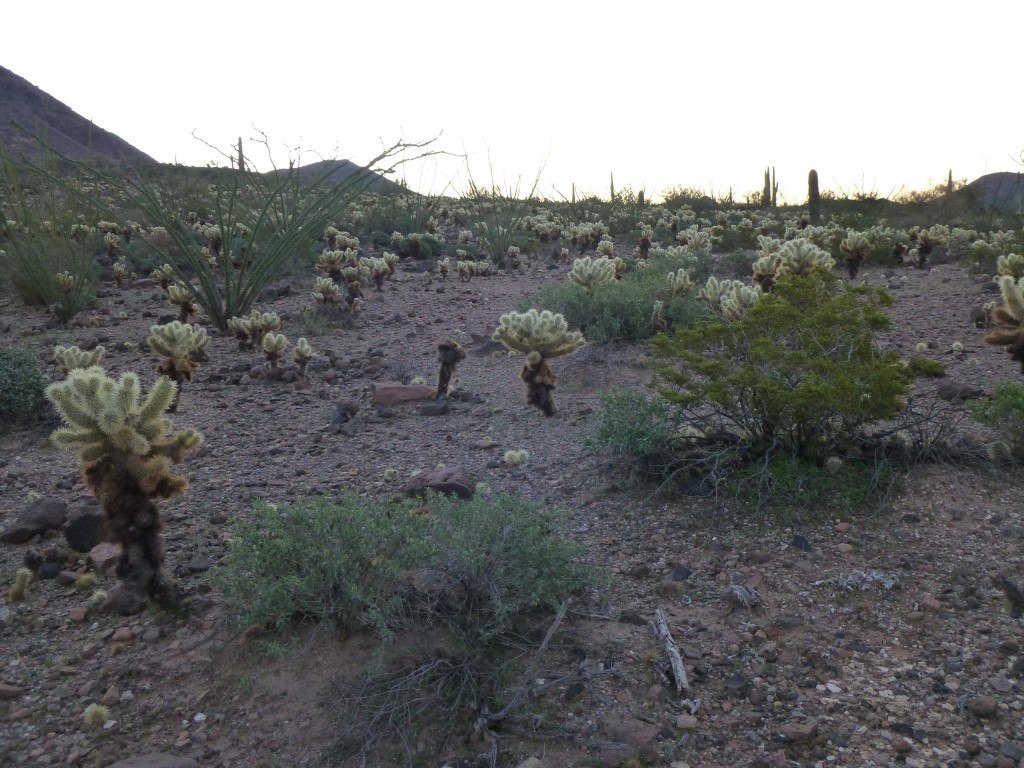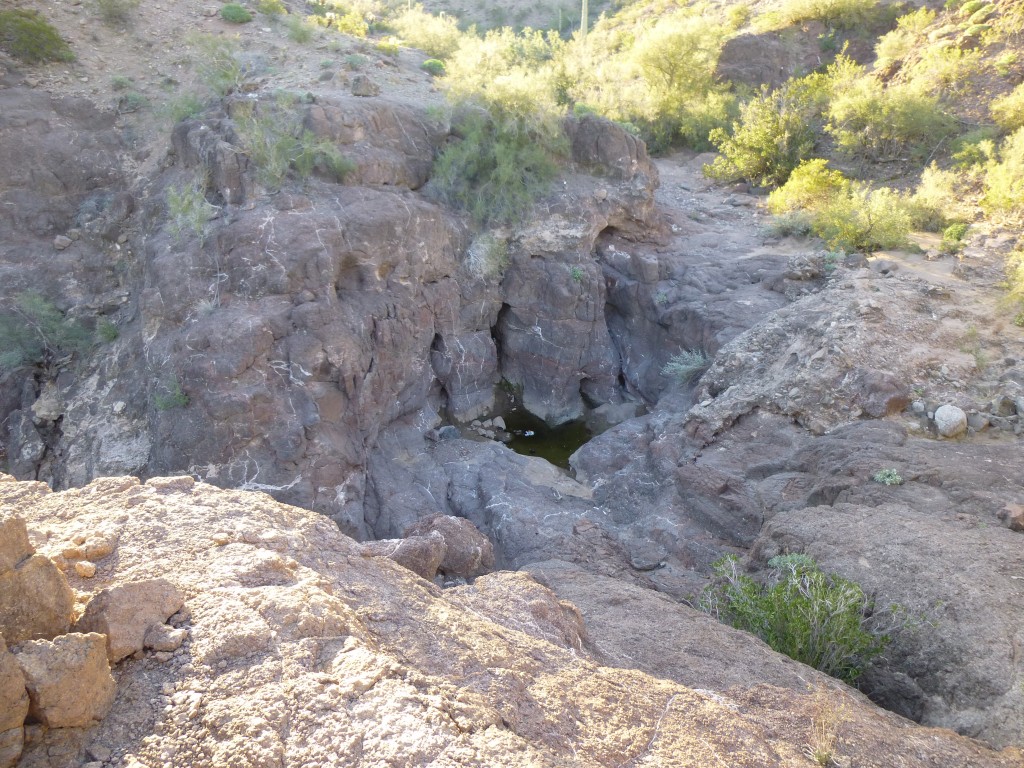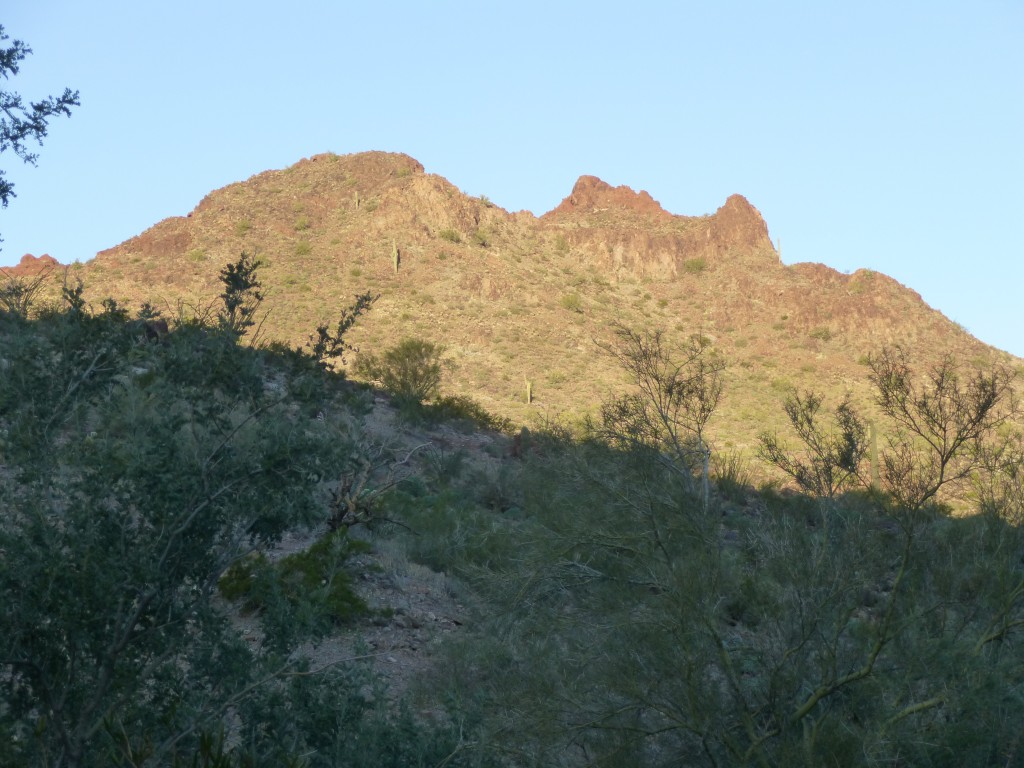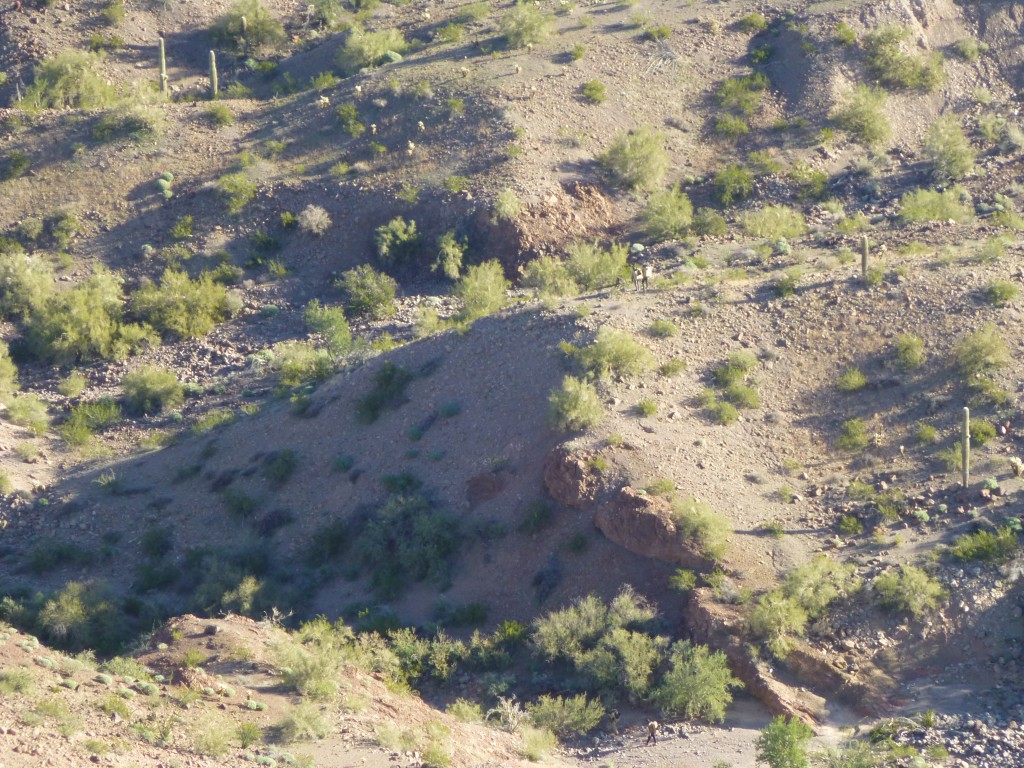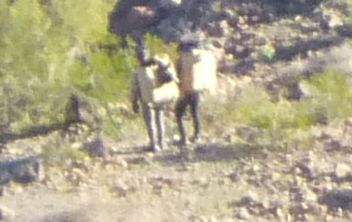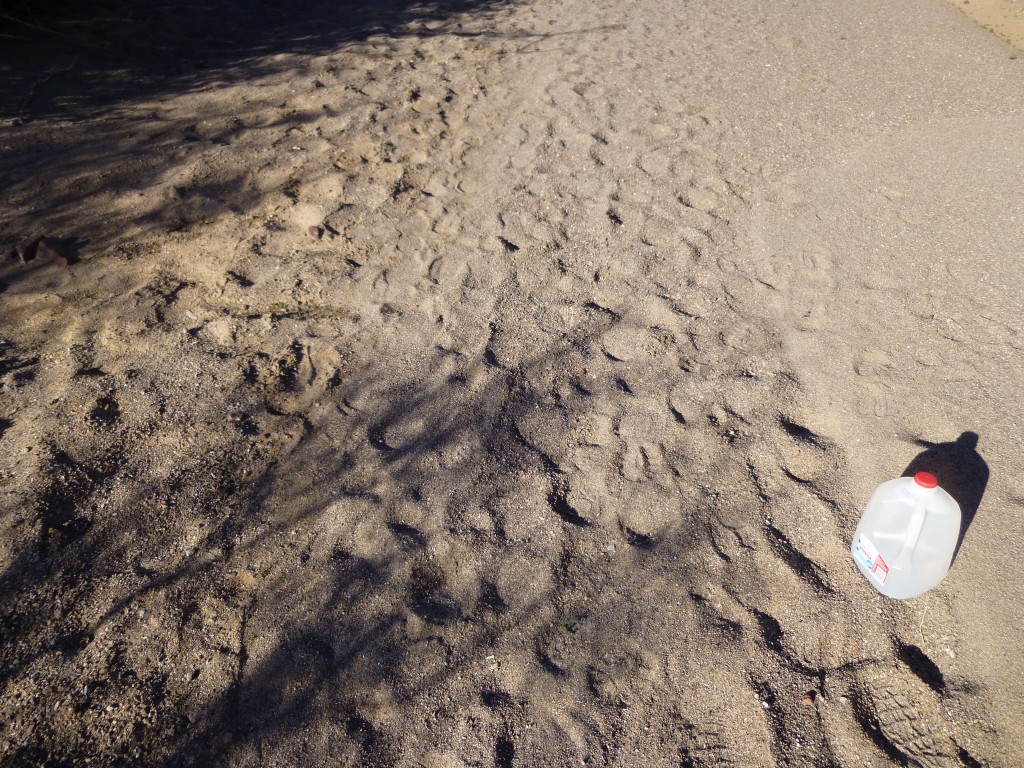For several years, I had been eyeing a group of peaks in the northernmost part of the Growler Mountains. This range is so remote that even most people who live in Arizona have never heard of it. Those who have visited it fall into one of a few categories – climbers, biologists, hunters, law enforcement or drug smugglers. Name your poison, this area sees but a few visitors each year. There are no roads, so it all has to be done on foot. Actually, there is one road that approaches the area, the rough track that heads west to Charlie Bell Pass. A mountain that lies just north of the pass, Growler Peak, has been visited by several climbers. Beyond that, however, points farther north had seen only two previous visits by climbers – they had picked off the group of three summits just north of Growler Peak, but had done nothing more ambitious than that. The whole area lies within the Cabeza Prieta National Wildlife Refuge
So, I figured I’d give it a go. It seemed like it’d be an adventure, that I’d have the place to myself. The only way I could pull it off would be to do it as a backpack – there was just too much ground to cover in a single day. There were eight peaks I wanted to climb – we already know that three of them had been done; the other five would be mine, or so I figured.
The day after Christmas, I headed out and climbed an easy peak near the town of Ajo, then headed west along the bumpy road to park at Charlie Bell Pass. It was already late in the day, so I settled in for the night, sleeping in the back of my truck. Early the next morning, my friend Andy Bates arrived, having driven directly from Phoenix. Together, we spent the next twelve hours wrestling with Sheep Peak – but that’s another story. It was dark when we got back to the vehicles, only to discover that Andy had a flat tire. It took us an hour to change it, then he took off. I wouldn’t find out until four days later that shortly after he had left me, the never-before-used spare had shredded while driving along the dirt road. As I had no cell-phone reception, he was left to his own devices. He managed to re-inflate the original flat and limped home, finally arriving by 2:00 a.m.
Rising early the next morning, I spent an inordinate amount of time sorting all of my gear. I hadn’t backpacked for years, so I tried to be especially careful that I wasn’t forgetting anything. I had also moved my vehicle so it was in a more advantageous place to start my trek. At long last, by 9:00 a.m. I was ready to go. Half an hour’s walk north brought me to a spot labeled as Jack’s Well on the topo map. There, I found a solar panel providing power to pump water from deep underground into an above-ground storage tank. Travelers were free to use all they wished. A highly-visible blue flag advertised the spot – this told me it had been set up for the use of undocumented persons passing by, to minimize their chances of dying in the heat.
I was already carrying all the water I could manage, 11 quarts to be exact: four in 1-quart bottles, three in a bladder inside my pack, and, four more in a gallon jug which I carried in my hand as I walked along. The jug was somewhat unwieldy but there wasn’t enough room in my pack for it. In the desert, the few water sources that exist are usually unreliable, forcing you to carry all you need. Water is great stuff, but it sure is heavy. My body was already complaining about the load as I headed west from the well. It was all coming back to me now, the reason why I hadn’t backpacked for years – it was the pain!
Here, in a nutshell, was my master plan for the trip. I would follow a route which would take me close to eight peaks which I wanted to climb. I would stash the pack at the base of each one, climb to the top, return to the pack and keep on moving. Carrying the backpack would be a chore, but it sure would feel good to drop it and climb each peak unburdened. As I headed west from the well, I left the flat desert and climbed a long, gentle grade up a valley heading deep into the heart of the range. By the time I got to a good spot on the south side of my first peak, it was already 11:00 a.m. Man, it felt good to get that pack off my back! It only took 50 minutes to climb the 1,100 vertical feet to the top of Peak 2540. This turned out to be the highest peak of the trip, as well as the biggest climb. On top, I found a register left by others back in 1997. Signing in, I took pictures and enjoyed the view, then headed back down.
Once back at my pack, I continued heading northwest. The valley became much narrower, so that I was soon hemmed in closely by the surrounding mountains. At times, I could see what might have been a faint footpath – it was little-used, and there was almost no trash left by previous passers-by. That was a good sign, but I still kept my eyes and ears peeled.
The next summit I came to was Peak 1956. It was like an island in the middle of this tight valley. Once again, I hid my pack and did a quick climb of the peak. On top, I found the register I expected, signed by the following: Barbara Lilley, Gordon MacLeod, Bob Martin and Bob Packard. I was in good company – these four peakbaggers are legendary and all at the top of their game. Descending the steep southwest slope, I was soon reunited with my pack. In this next photo, Peak 1956 is the one right in the middle closest to the viewer.
It was only a short walk to arrive at the base of my next climb. I found a good spot to camp and laid out some of my gear, then did a quick ascent of Peak 2142.
On its summit was the expected register, once again signed by the usual suspects. I added my John Hancock, then took in the view. This peak sits right on the western edge of the range, and a very steep escarpment falls 1,500 vertical feet down to the desert floor. I also had an amazing view of Sheep Peak to the south.
It had clouded over by now. By the time I reached my gear once again, it was just after four o’clock. I set up the tent, a neat one-person job I had borrowed from my friend Jake. It weighed just over three pounds, yet offered all the advantages of a regular tent. Now let’s be clear, I have no problem with using a bivy bag in order to travel light. However, I don’t care for our desert denizens, especially things like spiders, scorpions and snakes, crawling into my sleeping bag to share my warmth.
Once the tent was up and ready, I sat on a nearby rock and ate dinner as it grew dark – a peanut butter and jelly sandwich on whole wheat. Since weight was a real factor for me on this trip, by giving up hot food I could avoid carrying a stove, pot and fuel. One small luxury I allowed myself was a paperback book, and it was a good one. It was Maurice Herzog’s “Annapurna”, an amazing telling of the first ascent of an 8,000-meter peak in the Himalayas. If you have never read this book, you owe it to yourself to do so. Even if you’re not a climber, you’ll love how it shows the tenacity of the human spirit. All snug in my sleeping bag, I snacked on trail mix while I read the book by headlamp, soon falling asleep.
The next morning, I arose at 6:00 a.m., and by the time I was all packed and ready to move on, there was usable light at seven. I was excited about today, as my climber friends had not advanced farther than this point into the range. The rest of the peaks awaiting me should, in theory, be all mine, un-visited by anyone in the past. I continued up the valley, but before long I had reached its end.
Standing in a low saddle, I could see a big chunk of my route ahead of me. The first thing I needed to do was drop down a couple of hundred feet into a wash, then follow it north down this entirely new valley. A feature I had seen on the map was called Sheep Tank, but I didn’t know exactly what to expect when I got there.
As I approached its location, the canyon became deep and narrow. My question was answered – Sheep Tank was a set of natural basins in the solid rock, what are also known in these parts as tinajas. They were large, and very deep. There was a lot of water there, as well as plenty of trash that had been left by passers-by.
I had promised the folks back in the Cabeza Prieta main office in Ajo, Arizona that I would send them pictures of whatever the tank was, as none of them had ever been near the place. As much as I wanted to stick around and explore the pools, something was telling me to move on. My next peak was close by, and I had some concerns about it.
Contouring across the hillside from the tinajas, I found a good spot to stash my pack. Yesterday, from a distance, I had been eyeballing this next peak (Peak 1890) – it had three separate bumps on the summit ridge, and the one that looked the highest was pretty rugged. It didn’t take long to make my way over to it, and the climb went better than I thought it might.
As I had hoped, there was no sign of any previous visit by anyone. Sitting there filling out a register, I could have sworn I heard voices. But from where? The canyon bottom was 600 feet below me, and it sounded like the voices were coming from there. I kept looking, checking for any movement – it took a while, but finally I thought I saw something. Two human figures, barely discernible as such, were moving along the opposite side of the canyon. This next picture is a 10x magnification of the area where they were, which was actually 1,600 feet away from my mountaintop.
Quickly taking out my camera, I zoomed in as much as I could and took a few quick photos. These guys were really moving, so much so that I lost sight of them in less than a minute. They were carrying large tan-colored box-shaped loads on their backs. No question about it, these were drug loads being ferried through the mountains. The next photo is a cropped and magnified piece of the above photo.
As interested as I was in what was going on, reality started to sink in. This was very serious business. These were bad men. They were in a hurry. They wouldn’t take kindly to any interference or any outsider knowing their business. What should I do? Unfortunately, they were heading in the same direction I was, and if I were to complete my trip and get the rest of my peaks, I’d have no choice but to go down to the canyon and head north just like they were doing. But they were moving so quickly – by the time I worked my way back down to my pack and then over to where I had last seen them, they’d be at least two miles ahead of me down the valley. That seemed like a good margin of safety. By the time I reached my next peak, miles away, they’d have moved out of the area with their loads. One thing was certain, they didn’t want to hang around. Somebody somewhere was waiting for those drugs – a 40-pound bale of marijuana could earn $320,000.00 at current pot-store prices in Colorado. If for some reason they didn’t arrive, heads would roll, literally. I know I sure didn’t intend to get in their way!
I made my way back down to my pack, ever-so-cautiously, looking around constantly to see if anyone else was around. My next move was to drop another hundred feet down into the canyon itself. There, I found the fresh footprints of the smugglers, plainly visible in the sandy bottom of the wash.
Continuing north, the canyon twisted and turned constantly, so much so that it was hard to see more than a hundred feet ahead. Finally, the canyon widened out dramatically and I found myself out in the open in a wide sandy wash. The sun was shining brightly and the world seemed at peace. I felt more at ease than before and walked with a lighter step.
All of a sudden, I heard voices, men’s voices, speaking Spanish. Maybe a hundred feet ahead of me, standing in the shade of a large mesquite tree, but plainly visible, were four men, not just the two I had seen earlier. My heart was pounding, and I didn’t know what to do. A part of me wanted to keep walking up to them and greet them with “Hola!”, since I had pretty much reached them and was sure they had already seen me. But for some reason I didn’t. I was terrified, feeling a fear unlike anything I had felt in a long time.
Stay tuned for the conclusion of this story, entitled “Drug Smugglers Part 2”
You can visit us at our Facebook page, at
https://www.facebook.com/pages/Desert-Mountaineer/192730747542690

